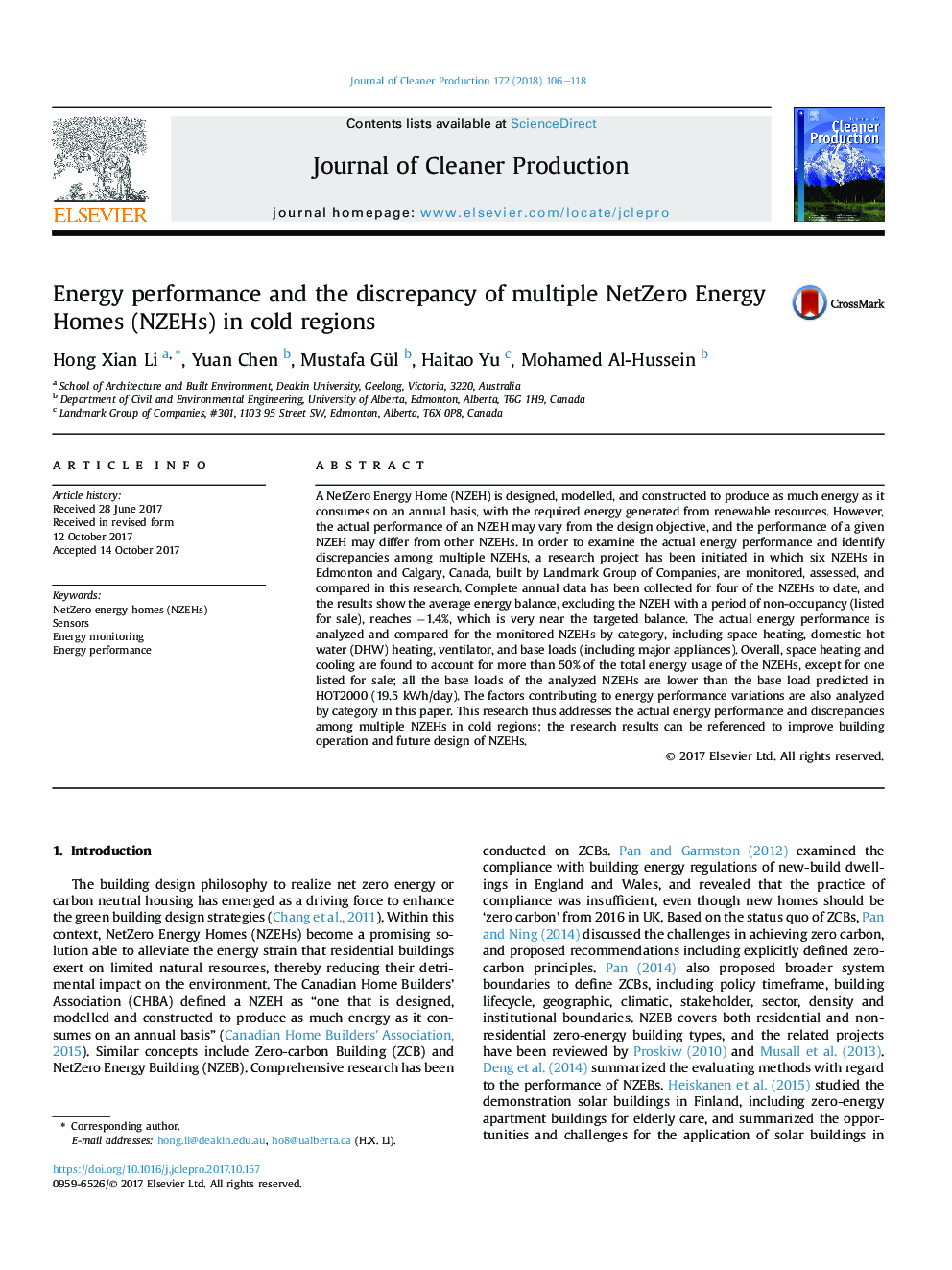| Article ID | Journal | Published Year | Pages | File Type |
|---|---|---|---|---|
| 8099767 | Journal of Cleaner Production | 2018 | 13 Pages |
Abstract
A NetZero Energy Home (NZEH) is designed, modelled, and constructed to produce as much energy as it consumes on an annual basis, with the required energy generated from renewable resources. However, the actual performance of an NZEH may vary from the design objective, and the performance of a given NZEH may differ from other NZEHs. In order to examine the actual energy performance and identify discrepancies among multiple NZEHs, a research project has been initiated in which six NZEHs in Edmonton and Calgary, Canada, built by Landmark Group of Companies, are monitored, assessed, and compared in this research. Complete annual data has been collected for four of the NZEHs to date, and the results show the average energy balance, excluding the NZEH with a period of non-occupancy (listed for sale), reaches â1.4%, which is very near the targeted balance. The actual energy performance is analyzed and compared for the monitored NZEHs by category, including space heating, domestic hot water (DHW) heating, ventilator, and base loads (including major appliances). Overall, space heating and cooling are found to account for more than 50% of the total energy usage of the NZEHs, except for one listed for sale; all the base loads of the analyzed NZEHs are lower than the base load predicted in HOT2000 (19.5 kWh/day). The factors contributing to energy performance variations are also analyzed by category in this paper. This research thus addresses the actual energy performance and discrepancies among multiple NZEHs in cold regions; the research results can be referenced to improve building operation and future design of NZEHs.
Related Topics
Physical Sciences and Engineering
Energy
Renewable Energy, Sustainability and the Environment
Authors
Hong Xian Li, Yuan Chen, Mustafa Gül, Haitao Yu, Mohamed Al-Hussein,
